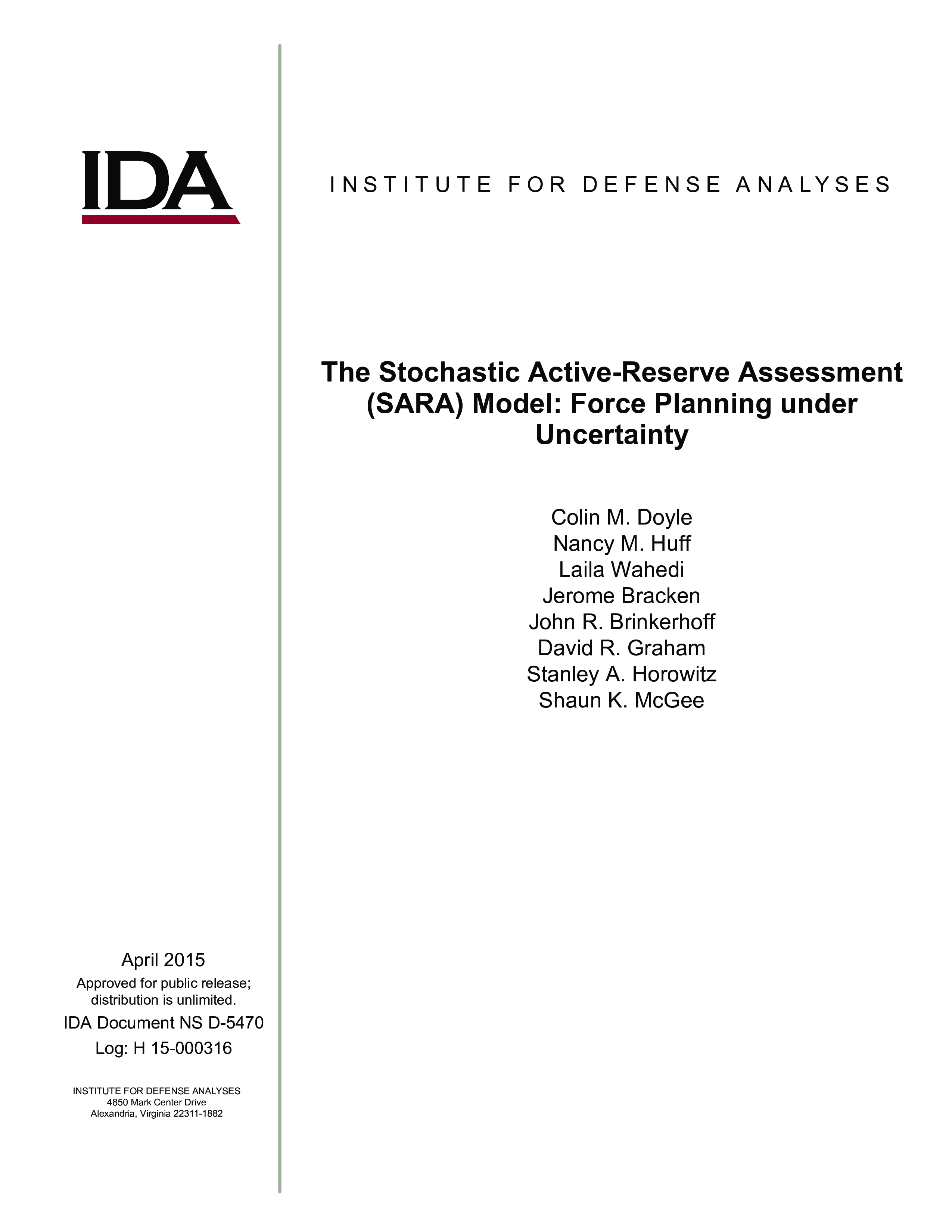The Stochastic Active-Reserve Assessment (SARA) Model: Force Planning under Uncertainty
April, 2015
IDA document: D-5470
FFRDC: Systems and Analyses Center
Type: Documents,
Talent Management
Division: Cost Analysis and Research Division
Authors:
IDA document: D-5470
FFRDC: Systems and Analyses Center
Type: Documents
Division: Cost Analysis and Research Division
Authors:
Authors
Doyle, Colin M.; Huff, Nancy M.; Wahedi, Laila; Bracken, Jerome; Brinkerhoff, John R.; Graham, David R.; Horowitz, Stanley A.; McGee, Shaun K.
See more authors

